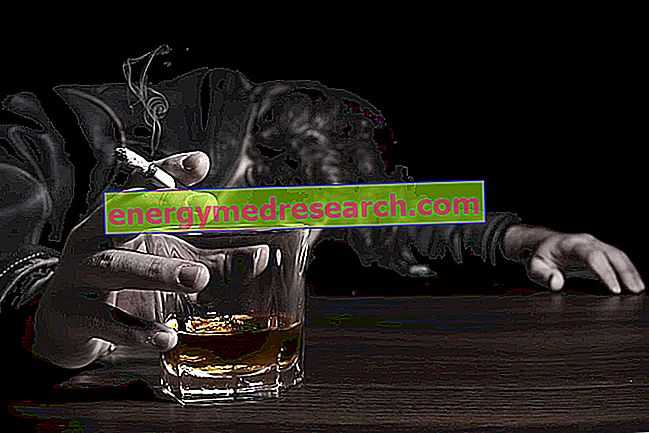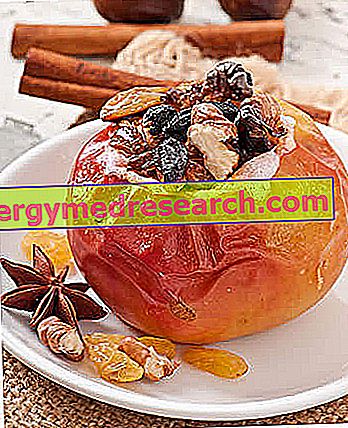Generality
Thai massage or Thai massage is a form of massage originating in Thailand.

According to legend, the spread of massage techniques in Thailand came about thanks to the codification made by the Indian physician Shivago Kumar Baj, indicatively, around the 5th century BC (before Christ). This figure is still considered in Thailand today as the father of medicine. However, despite the legends that circulate about it, the origins of this form of massage are still unclear today.
The Thai massage is characterized by the execution of different types of manipulations, including pressure, stretching and stretching, which are associated with so-called passive yoga techniques .
Similarly to what happens with many other types of oriental massages, the Thai one also aims to bring benefits to the person as a whole, not only physically but also mentally.
In Thailand, Thai massage is usually considered part of traditional Thai medicine .
What is that
What is Thai Massage?
Thai massage is a particular type of typically Thai massage, but whose origins are not entirely clear. According to legend, it was thanks to the Indian doctor Shivago Kumar Baj - Buddha's friend - that massage techniques were introduced in Thailand, giving rise to Thai massage. However, despite the enigma about the true origin of this type of massage, it is believed that it derives from a combination of knowledge of ayurvedic medicine, yoga and traditional Chinese medicine, in addition to Buddhist influences .
What is it for
What is Thai Massage for?
Similarly to the ayurvedic massage, to Chinese massages (such as, for example, the Tui Na massage) and to other types of oriental massages, the objective that Thai massage aims at is not only to bring benefits to the physical level, but also to spiritual and mental level. In fact, according to tradition, manipulations are carried out with the intention of stimulating the energy channels - called "Sen" - which run through the body of each individual. In this way, the restoration of the correct flow of energy in the body should be facilitated, whose alteration or blockage can be - according to the philosophy underlying the Thai massage - cause of malaise and disorders.
Denominations and styles
Other Denominations of Thai Massage and Different Styles
Thai massage is called with many other names: traditional Thai massage, classic Thai massage, traditional therapeutic massage, Thai yoga massage and Siamese massage . This last name derives from the fact that this massage was practiced in the empire of Siam (current Thailand), also known as the kingdom of Rattanakosin, the fourth kingdom of the Siamese.

Initially, Thai massage was practiced exclusively in the royal palace at the court. Later, some "popular" versions also spread. Nowadays, it is therefore possible to distinguish two main styles of Thai massage:
- Court style, Tahi Royal or Rachasamnak style : it is the style that was practiced in the royal palace. Since at its origin the teaching of Thai massage was handed down from the master to the student only in verbal form, it is probable that part of the original manipulations were lost. Despite this, there are still some schools that are concerned with preserving and teaching the art of Thai massage which refers to the original style of court.
- Popular style or Chaleeysak style : it is the popular and "less cultured" style; it is practiced in a different way than that which was originally practiced in the royal palace of the empire of Siam.
The two styles differ in the manipulations performed and in the positions taken on the massaged. For example, the popular Thai style massage provides the supine position, the prone position, the position on the right side, the position on the left side and, finally, the sitting position. The Thai style court massage, on the other hand, provides the aforementioned positions, except for the prone position which is not contemplated.
Curiosity
Sometimes, Thai massage is also referred to as passive yoga or yoga for lazy people . In fact, this form of massage is characterized by the execution of various manipulations that also include some yoga techniques that the masseur gives the massaged person in a passive manner.
How you do it
How is Thai massage performed?
Thai massage is traditionally performed on the ground, on a special mattress to ensure the comfort of the massaged.
Before starting with the manipulations, however, the masseur should make a "diagnosis" on the patient's needs, in order to offer personalized treatment aimed at satisfying the needs of the individual.
Please note
The serious and professional masseur should also be informed about the health status of the person, in order to determine the possible presence of contraindications to the execution of the massage.
Thai massage does not involve the use of oils or other substances; the massaged must wear light and preferably loose clothing, so as not to hinder the movements.
According to tradition, at the beginning of the treatment, the masseur should kneel next to the massaged and - maintaining the due concentration - he should place his right hand on the belly of the latter who will be in a supine position. This area of the body is considered as the central point of the body and the massage should start from here with slow and light movements that follow the rhythm of the massaged breathing.

After this first phase, the intensity of the manipulations should gradually increase, without producing excessive pain or unpleasant sensations in the individual. More in detail, the Thai massage involves performing a series of pressures, stretching, stretching, twisting, extending, kneading, lifting and the passive execution of yoga techniques that the masseur gives to the massaged patient.
The manipulations are carried out with the hands, with the fingers, with the elbows, with the knees and even with the feet.
Did you know that ...
Since the Thai massage aims to restore energy flows, at the end one should not feel sedated, but on the contrary, full of energy.
Expected benefits
What Benefits Should Thai Massage Make?
According to tradition and according to the philosophy at its base, the Thai massage - going to act on the centers and on the energy channels present in the body - should bring benefits both physically and mentally
The rebalancing of the correct energy flows should in fact help the massaged person to recover a condition of total well-being .

From a purely physical point of view, however, Thai massage should bring the following benefits:
- Promote muscle elasticity;
- Increase and promote both muscular and joint mobility;
- Promote the reactivation of blood circulation (in particular venous circulation) and lymphatic circulation;
- Counteract joint and muscle pain;
- Increase the speed of recovery after sports performance, especially in those athletes who perform aerobic activities;
- Promote the elimination of toxins accumulated in the body.
Finally, according to some, Thai massage could also be useful in combating sleep disorders and alleviating any emotional tensions.
Effectiveness and Safety
Is Thai Massage Really Effective and Safe?
Thai massage is normally not considered as a real therapeutic treatment, therefore - even if in some areas it is regularly applied - it does not have specific therapeutic indications . Furthermore, not all the potential benefits attributed to it have been confirmed by adequate scientific studies; there is therefore no guarantee that its execution is effective in contrasting or reducing the pains or disorders listed in the above chapter (Expected Benefits). On the contrary, if performed poorly, if performed by inexperienced personnel - or even worse - if performed in the presence of contraindications, the Thai massage could prove useless as it could exert negative effects and be even dangerous for the health of the massaged.
For this reason, if you are suffering from particular disorders or diseases, before deciding to undergo a Thai massage session, it is good to ask your doctor for advice.
Studies conducted to determine the efficacy and safety of Thai massage
Some studies have been carried out on the Thai massage in order to determine its efficacy and safety as an adjuvant treatment in the presence of particular disorders or diseases.
For example, a study conducted on 60 patients suffering from Parkinson's disease showed that performing Thai massage could be useful - as a supportive treatment to be associated with traditional medical-pharmaceutical therapies - in alleviating the muscle weakness that typically affects the people affected by this disease.
Another study conducted on healthy Korean patients, however, has highlighted how performing Thai massage is able to exert a positive effect on vascular compliance.
Finally, other studies have shown that Thai massage can be useful in the short-term reduction of pain experienced by patients with unspecified low back pain.
Of course, these studies - albeit on a small scale - used professional masseurs with high experience in performing Thai massage.
Please note
Those mentioned above are studies whose results, however encouraging, should be confirmed by further and more extensive research carried out on a large scale. Therefore, the effectiveness and safety of Thai massage cannot be guaranteed in any individual and in any situation, especially if you suffer from particular diseases or disorders. In this regard, it is reiterated the importance of seeking the advice of your doctor before undergoing Thai massage sessions.
Contraindications
When the Thai massage should NOT be done
As with any other type of massage, the Thai one should also not be practiced in some situations. More in detail, the Thai massage must not be carried out:
- In the presence of skin disorders and diseases (for example, skin infections);
- In the presence of wounds, burns or skin lesions of any kind;
- In individuals suffering from high blood pressure and / or suffering from other cardiovascular diseases;
- In the presence of inflammatory states;
- In the presence of fractures;
- In people suffering from hiatal hernia;
- In pregnant women.
In any case, if you suffer from disorders or diseases of any kind, even if not listed in the above list, it is always good to ask for your preventive doctor's opinion before undergoing Thai massage sessions.



